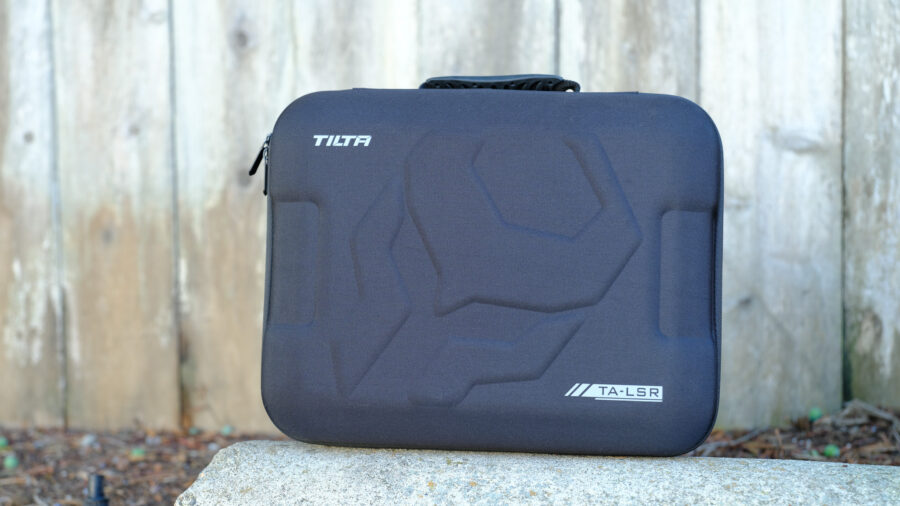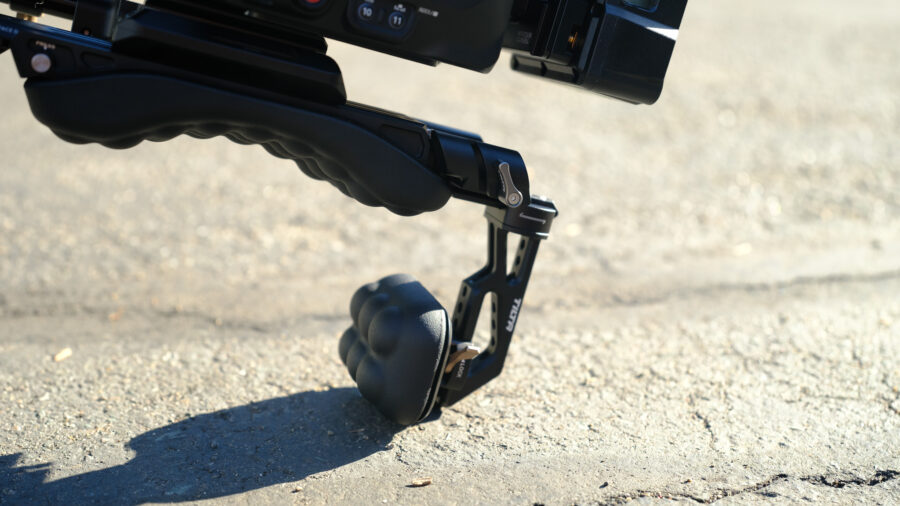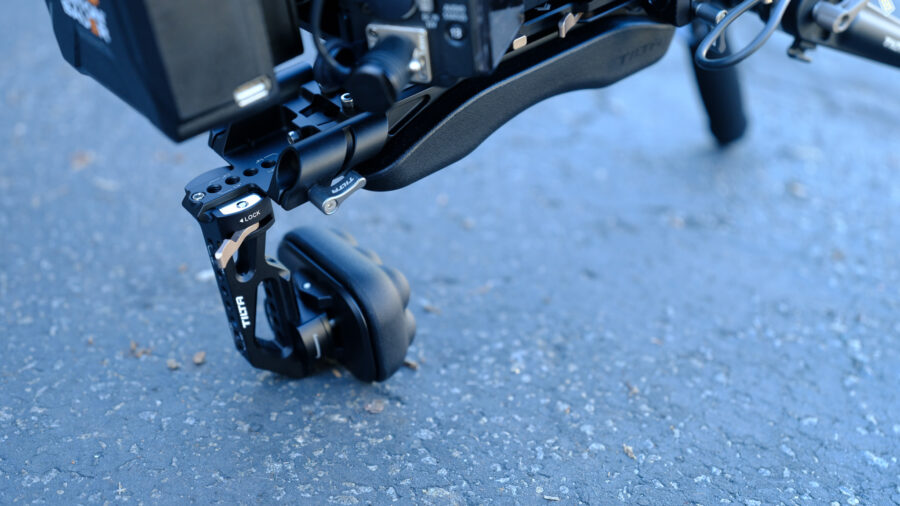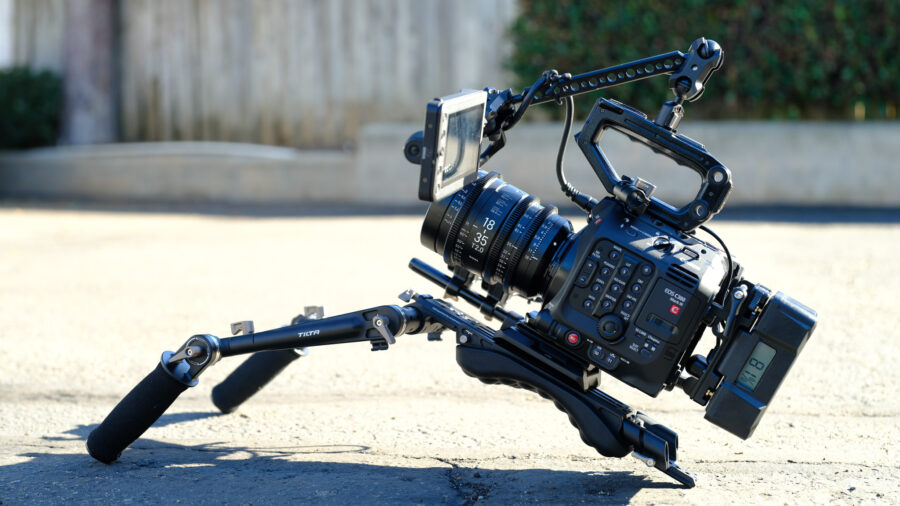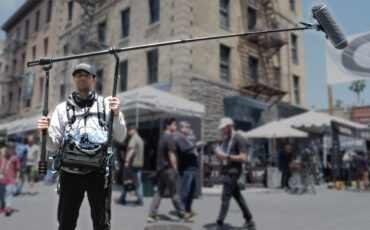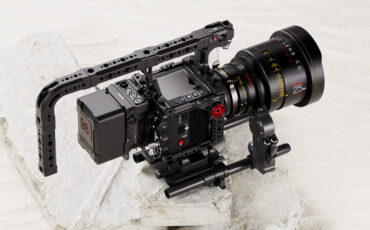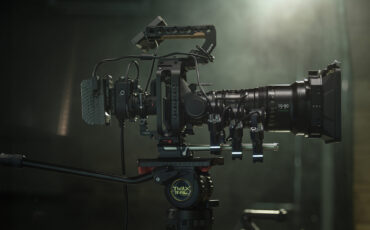Tilta Lightweight Shoulder Rig Review – Not Perfect but Surprisingly Comfortable
Restriction-free music courtesy of Epidemic Sound. Sign up here: Epidemic
Tilta’s new Lightweight Shoulder Rig comes in at $339 for the base kit, and true to form, Tilta has included a bunch of bells and whistles in the package that might be considered a la carte additional purchases from other camera accessory brands. Shoulder rigs, like tripods, are purchases that stick with you for years and years. So, does the Lightweight Shoulder Rig have what it takes to keep your shoulder happy and your camera safe? Let’s check it out.
I love camera operating and try to do it wherever possible – even on larger sets where I wear different hats. There is something about the connection you get with your subject while operating that is unique and that doesn’t quite carry over to a monitor at Video Village. Towards that end, I am laser-focused on operating gear that works with me and doesn’t add pain or discomfort over long hours. Lately, I’ve been a fan of the Ergorig from Cinema Devices for support. Still, monitor placement is equally important (to avoid neck injury), and a quality shoulder rig is right at the top of the priority list. Your shoulder rig choice shouldn’t be an afterthought, and there are a bunch of affordable options out there, but keep in mind quality may vary.
Some shoulder rigs are specifically designed for a single camera system, but there are a few that could be considered “universal.” Here are just a few of the lower-mid-cost competitors:
- SmallRig Shoulder Rig Pro Kit – $335.00
- CAMVATE Pro Shoulder Mount Rig – $286.00
- SHAPE ARRI Dovetail Shoulder Mount with Handles – $666.75
- Zacuto ACT Baseplate – $295.00 (Handles sold separately)
- ikan Stratus Shoulder Rig System for Cinema Cameras – $299.99
- Kondor Blue Shoulder Pad Air Rig – $699.99
- 8Sinn Shoulder Rig Kiti with 15mm LWS Baseplate – $699.99
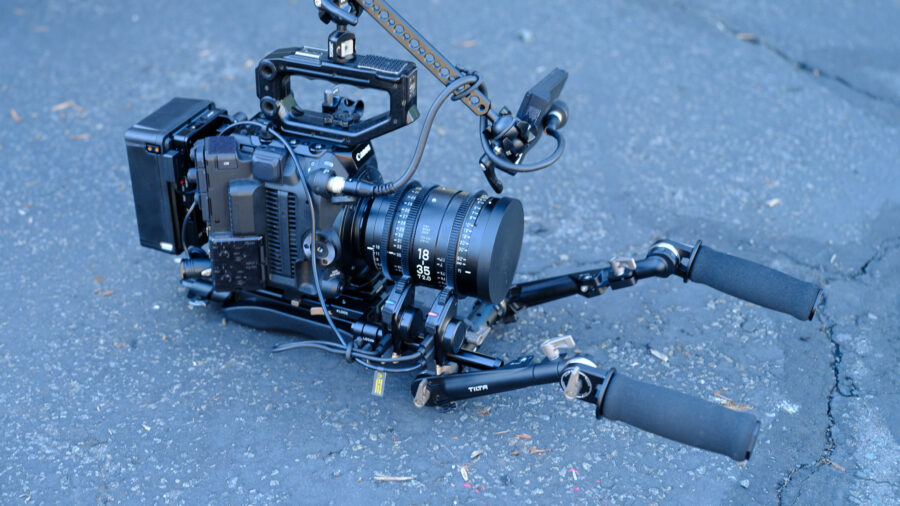
My history with Tilta as a brand began in the RED DSMC 1 era with a RED Epic Dragon rig. The price was competitive at the time, but it wasn’t my favorite rig overall. Since then, the brand has progressed significantly while sticking to affordable price points. I’m seeing Tilta products on larger and larger sets these days, and their Nucleus Nano II Follow Focus / Zoom Rocker is especially impressive. (Nano II review coming soon).
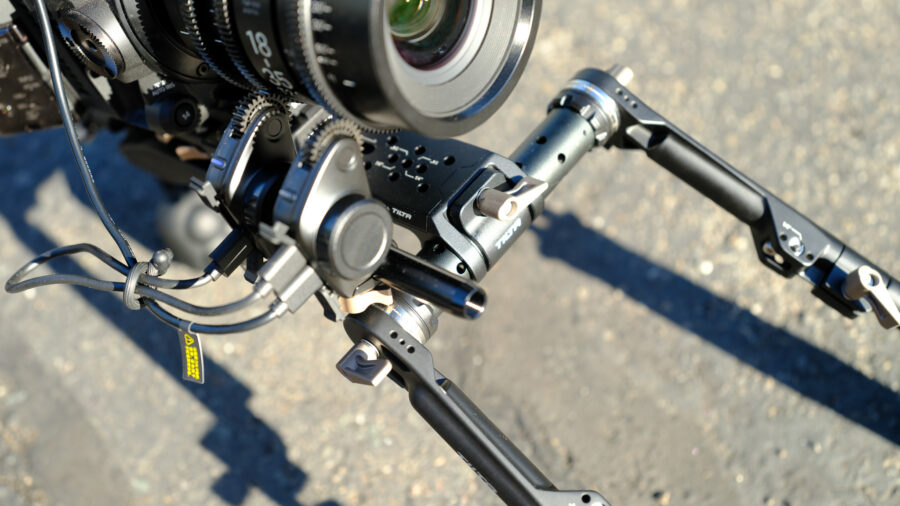
Tilta markets the Lightweight Shoulder Rig as geared towards “compact camera rigs.” I might be pushing the definition of “compact” a bit with my Canon C300MKIII and SIGMA Cine Zooms, but at about 5 lbs. (2.268 kg) for the body itself, this isn’t a particularly heavy camera. I just think Tilta intends this rig more for the likes of the RED Komodo, Sony FX3, Canon EOS C70, or even a Canon EOS R5 C with DSLR glass.
Either way, it works fine with my Canon EOS C300 Mark III, and I feel like other more mid-sized cine cameras like a Sony FX6 would do well, too. Moving on.
First impressions
It is hard to overstate how much I enjoy self-contained kits, and this shoulder rig comes in a semi-rigid hard case with plenty of interior room that suggests it could take a hit or two without damaging the overall rig. Having everything in a kit means I don’t need to dedicate the time to figuring out another solution. It’s also easy to throw in my vehicle for a shoot at the last minute while having the confidence it’s all good to go when I land at the location.
The main components of the Lightweight Shoulder Rig are the following:
- 15mm Rod Mounts (dual at the rear, and one near the front)
- Baseplate (Arca and Manfrotto compatibility)
- Quick Adjustable Rosette Arms (additional cost from the core kit)
- Shoulder Rig
- Back Shoulder Pad
Out of the case, everything assembles quickly. The first thing I noticed is an adjustable horizontal bar that allows the rig to be quickly set on a flat surface or for added flexibility with the two front handles. I do wish the locking screw for this bar had a safety catch element because loosening this screw while the camera is on your shoulder will tip the weight of the camera forward (something to be mindful of).
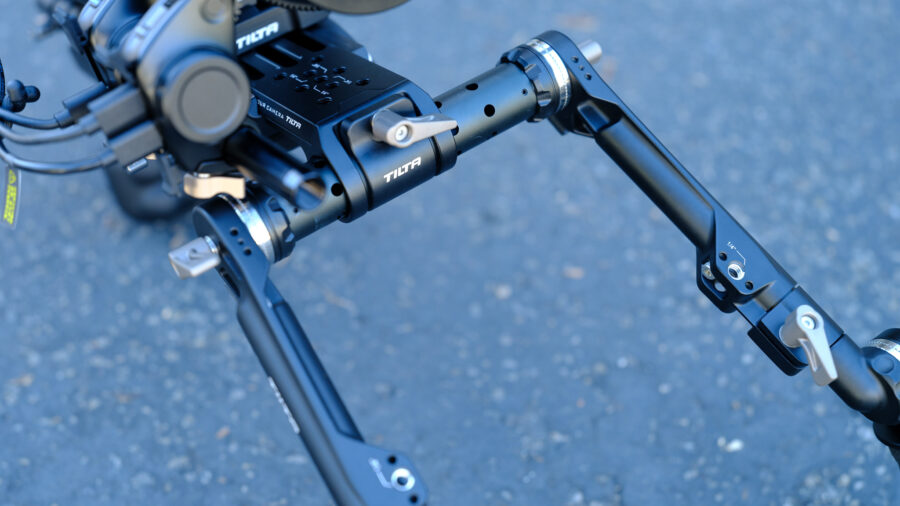
The handles are comfortable and feature a fully adjustable arm on either side, allowing for different operator body types and heights. Everyone wants their handles in different places depending on the gig, and this system lets you do just that. Add the quick-adjust rosettes (available as part of a more expensive kit), and this brings another layer of flexibility if you change your hand position often while filming. Some may prefer the locking knob over the quick-adjust rosettes. It just comes down to preference.
For power, you could install a battery plate like this one from Tilta on the back part of the rig itself, but my battery on the C300MK III affixes directly to the camera.
Unfortunately, the included camera plate only has 1/4-20 screws and not 3/8″-16 options, and it is designed in such a way that you couldn’t add 3/8″-16 screws even if you wanted to. Not a big deal for smaller cameras, but I appreciate combining both screw types for larger camera builds.
Everything is a stylish matte black made from aluminum alloy with rounded edges and no sharp points to catch on an operator or AC. A 1/4-20 mounting point on each handle gives you another spot to mount a small monitor or other accessories.
Tilta Lightweight Shoulder Rig – operation
Given the fact that “lightweight” is literally in the product name, you’ll be happy to hear that the overall rig is one of the lightest I’ve ever used. With the low weight, I was worried that corners might be cut in the strength of the overall material, but I didn’t see any sketchy bending or flexing despite having a camera rig at the top end of the overall system weight limits.
A useful design innovation here is the use of a back pad (see image below), an idea I would love to see find additional use in this accessory segment as a whole, and on future Tilta shoulder rig products – it’s that good. The back pad helps when you tilt down because it transfers weight to your back and not your biceps. If you have ever worked on a cooking show where you are often required to tilt from the chef’s face to the plate on the counter, you will immediately appreciate this design innovation.
There are also multiple mounting points on the back pad where you could add a counterweight like this one (designed specifically for this shoulder rig by Tilta).
Strangely, there isn’t a way to make this rig work with a VCT system, and that’s a bit of a bummer if you need to transition from tripod to shoulder and back. If you plan to live on your shoulder for the entire shoot day, then this lack of VCT compatibility won’t be an issue for you. Tilta, as a company, seems invested in the dovetail platform over VCT in most of their products.
And speaking of living on your shoulder – I love the cushion on both the back pad and the shoulder pad. It is incredibly comfortable and feels like you have a piece of memory foam between you and the camera: A+.
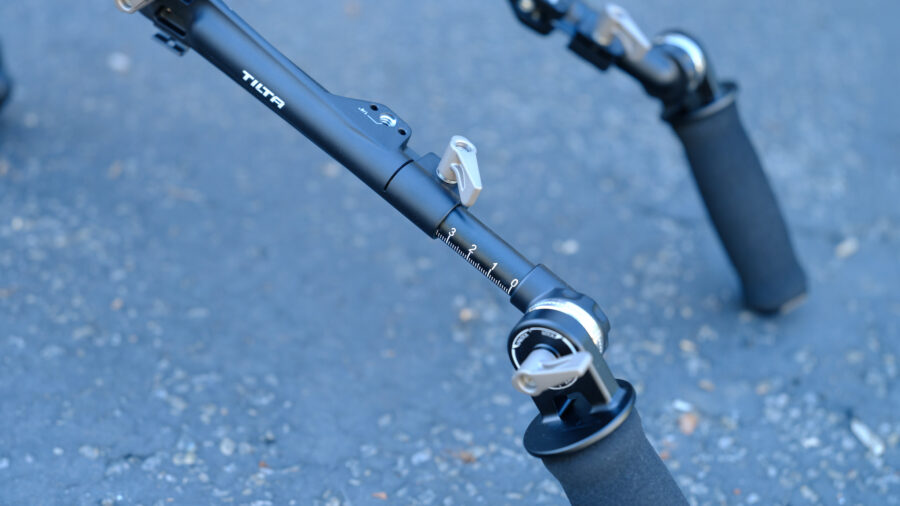
Quick moves and heavy use over a long shoot day didn’t loosen any of the knobs to the point where I felt like they were fighting my camera moves. At one point, I actually removed the left handle so I could just leave my hand on the lens barrel. Everyone is different, and having a shoulder rig that can keep up with different op styles is important.
I found the padded handle grips to be comfy, but you could upgrade one of these (depending on if you are right or left-handed) to a $157 Tilta Wooden Handle with Control Trigger – just double-check that your camera has the correct available trigger cable or the record button won’t work. The use of ARRI standard rosettes on this rig also opens up options from a few other brands as well if you want to mix and match components.
Tilta Lightweight Shoulder Rig – conclusion and price
The $339 / €344 Tilta Lightweight Shoulder Rig is priced competitively, takes lighter to mid-sized cameras, and, maybe most importantly, is very, very comfortable. The back pad is something I didn’t know I needed on a shoulder rig (can’t live without it now!), and the whole rig breaks down into a small kit for transport.
I find the adjustable horizontal bar to be a good idea, but in practice, the lack of a safety catch means it feels like a potential future failure point with extensive use – only time will tell there. The lack of a VCT mounting solution makes the overall rig a bit less flexible than it could be from job to job. The single 15mm rod mount is nice, but two would be better for lens support or additional accessories.
There are cheaper shoulder rigs on the market, but you’d be hard-pressed to find one that is this comfortable to film with. The Tilta Lightweight Shoulder Rig strikes the right balance between cost and quality.
What kind of shoulder rig do you use? Is there another one you could recommend? Let us know in the comments below!

